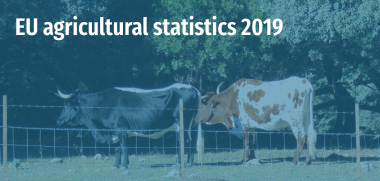Agriculture is one of the most important economic activities inall EU countries that receive EU funds through the Common Agricultural Policy (CAP).
These funds support farmers directly through the European Agricultural Guarantee Fund and rural areas, climate action and natural resource management through the European Agricultural Fund for Rural Development.
To give us an idea of what these funds mean, in 2019, they were spending 38.2 € billion of euros in direct payments to farmers and € 13.8 billion in rural development. Another 2.4 billion euros supported the market for agricultural products.
The CAP expenses are collected and determined by the long-term budget of the EU and aims at the contribution of a healthy and safe diet of the citizens of the member countries (link).
Employment in this sector
The agricultural industry generated 9,476,600 jobs in 2019 and 3,769,850 jobs in food production (in 2018) and represented 1.3% of the EU’s gross domestic product in 2020.
From these data, Romania employed the largest number of people employed in the primary sector (2019), while Denmark led the number of people employed in food production in 2018.
Agricultural production in Europe
Agriculture in the EU is rich and varied in food products (dairy products, oil, cereals, etc.). Since its inception, the EU has legislated with the aim of guaranteeing the production and sale of food; as well as the standard of living of the farmers.
And to achieve this, the EU released in 2020 the Farm to Fork strategy to ensure that agricultural production is more sustainable by 2030, by eliminating pesticides, protecting pollinators, promoting biodiversity, etc.
We must emphasize that the new CAP rules, which will apply from 2023, and will transfer money from intensive agricultural practices to protect nature and reduce 10% of EU greenhouse gases emitted by agriculture.
In line with this, the chief executive of agriculture of the European Commission, Janusz Wojciechowski, commented that the reforms “foster a sustainable and competitive agricultural sector that can support farmers’ livelihoods and provide healthy and sustainable food for society, while generating significantly more in terms of the environment and climate“.
And, you can access the data of the subsidies and the benefits of the CAP in the following window. You will be able to configure both the aid and expenses in all the member countries, as well as by country.
